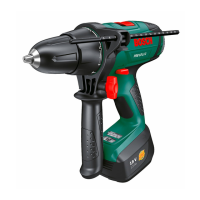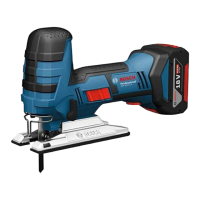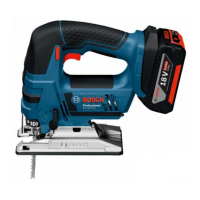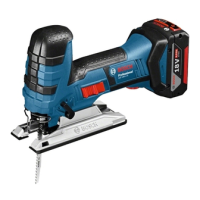Place the power tool so that the front edge of the base plate (10) rests on the workpiece, without the saw blade (15)
touching the workpiece, and switch it on. On power tools with stroke rate control, select the maximum stroke rate.
Press the power tool firmly against the workpiece and allow the saw blade to plunge slowly into the workpiece.
As soon as the base plate (10) rests fully on the workpiece, continue sawing along the required cutting line.
Parallel guide with a circle cutter (accessory)
When working with the parallel guide with a circle cutter (28) (accessory), the workpiece must be no more than 30
mm thick.
Remove the base for Cut Control (14) from the base plate (10). To do this, push the base together gently and
remove it from the guide (22).
Parallel cuts (see figure K): Loosen the locking screw (27) and slide the scale on the parallel guide through the guide
(22) in the base plate. Adjust the desired cutting width as a scale value on the inside edge of the base plate.
Retighten the locking screw (27).
Circular cuts (see figure L): Drill a hole large enough to push the saw blade through on the cutting line within the
circle to be cut. Machine the drill hole with a router or file so that the saw blade can lie flush with the cutting line.
Position the locking screw (27) on the other side of the parallel guide. Slide the scale on the parallel guide through the
guide (22) into the base plate. Drill a hole in the workpiece in the middle of the section to be cut out. Insert the
centring tip (29) through the inner opening of the parallel guide and into the drilled hole. Adjust the radius as a scale
value on the inside edge of the base plate. Retighten the locking
screw (27).
Coolant/lubricant
As the material heats up along the cutting line when cutting metal, you should apply coolant or lubricant.

